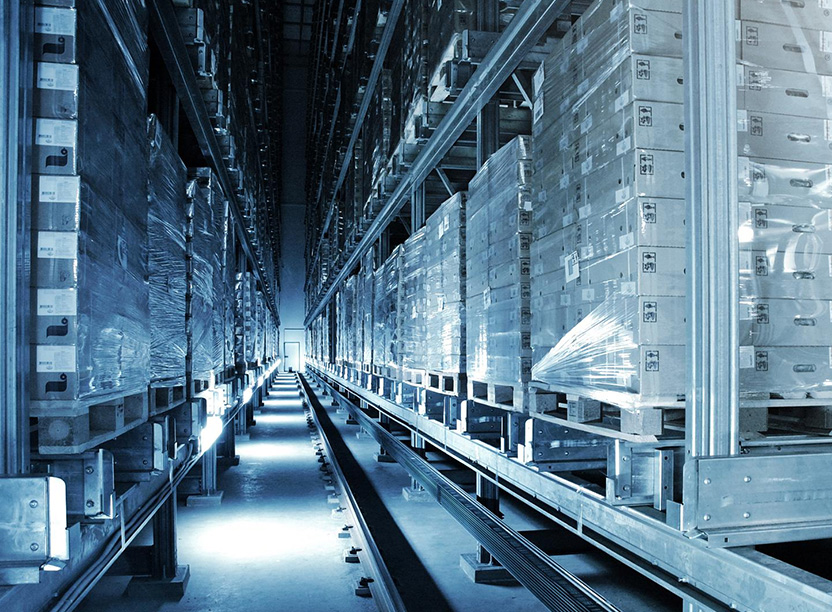In the world of cold storage warehousing, efficiency is key. Proper equipment plays a crucial role in maintaining the quality and integrity of temperature-sensitive products throughout the supply chain. In this comprehensive guide, we will explore the essential equipment needed for cold storage warehouses, discuss their functionalities, and highlight their importance in maximizing efficiency in cold storage operations. Whether you're involved in food warehousing, fresh food logistics, or managing a cold supply chain, understanding and utilizing the right equipment is essential for success.
Cold Storage Racking Systems
Cold storage racking systems are specifically designed to store goods in temperature-controlled environments. These racking systems are typically made from durable materials such as stainless steel or galvanized steel to withstand cold temperatures and prevent corrosion. The use of specialized racking systems allows for efficient space utilization, easy access to stored products, and proper airflow to maintain consistent temperatures throughout the warehouse.
Temperature and Humidity Control Systems
Maintaining precise temperature and humidity levels is critical in cold storage warehouses to preserve the quality and safety of perishable goods. Temperature control systems, such as refrigeration units, ensure that the warehouse remains at the desired temperature. Humidity control systems, such as dehumidifiers or humidifiers, help regulate moisture levels to prevent condensation and mold growth. These systems work in conjunction to create an optimal environment for the storage of temperature-sensitive products.
Automated Storage and Retrieval Systems (ASRS)
Automated storage and retrieval systems (ASRS) enhance efficiency and accuracy in cold storage warehouses. These systems utilize advanced robotics and software to automate the process of storing and retrieving goods. ASRS systems can significantly reduce labor costs, improve order accuracy, and increase the speed of order fulfillment. With the integration of cold storage-specific ASRS, warehouses can achieve higher throughput, optimize space utilization, and minimize errors in inventory management.

Cold Storage Forklifts and Pallet Jacks
Cold storage warehouses require specialized forklifts and pallet jacks designed to operate in low-temperature environments. These equipment have insulated cabs, heated cabins, and thermal protection to ensure the comfort and safety of operators. Cold storage forklifts and pallet jacks enable efficient movement of pallets and products within the warehouse, allowing for quicker loading and unloading of goods and minimizing the risk of damage to temperature-sensitive items.
High-Density Storage Systems
To maximize storage capacity and improve efficiency, cold storage warehouses can utilize high-density storage systems such as mobile racking or shuttle systems. These systems optimize vertical space utilization and enable efficient product access. Mobile racking systems use motorized bases that move along tracks, allowing aisles to open up only when access to a particular rack is needed. Shuttle systems utilize robotic shuttles to move pallets within the racking system, further enhancing storage density and reducing labor requirements.
Warehouse Management System (WMS)
A Warehouse Management System (WMS) is a software application that helps optimize and streamline warehouse operations. In cold storage warehouses, a WMS specifically designed for cold supply chain management can provide real-time visibility into inventory, monitor temperature and humidity levels, manage order fulfillment processes, and generate comprehensive reports. By utilizing a WMS, cold storage warehouses can improve inventory accuracy, enhance order tracking, and facilitate efficient resource allocation.
Cold Storage Doors
Cold storage doors are vital components in maintaining temperature control within the warehouse. These doors are designed to minimize air leakage, preventing warm air from entering and cold air from escaping. Cold storage doors often have insulation properties and efficient sealing mechanisms to ensure a tight seal when closed. By investing in high-quality cold storage doors, warehouses can reduce energy consumption, maintain consistent temperatures, and minimize temperature fluctuations that can compromise product quality.
Temperature Monitoring Systems
Temperature monitoring systems are essential for cold storage warehouses to ensure that products are stored within the required temperature range. These systems utilize sensors placed throughout the warehouse to continuously monitor temperature levels. If the temperature deviates from the set range, the system alerts warehouse personnel, allowing them to take immediate action to address any potential issues. Temperature monitoring systems provide valuable data for compliance with industry regulations, quality control, and traceability of products.
Conclusion
Maximizing efficiency in cold storage warehousing is crucial for ensuring the integrity and safety of temperature-sensitive products throughout the supply chain. By understanding and utilizing the right equipment, such as cold storage racking systems, temperature and humidity control systems, ASRS, specialized forklifts, high-density storage systems, WMS, cold storage doors, and temperature monitoring systems, warehouses can optimize space utilization, enhance inventory management, improve order fulfillment, and maintain product quality. AWL, a leading provider of warehousing solutions, recognizes the significance of efficient cold storage equipment and is committed to delivering top-tier cold storage warehousing services in the food and beverage industry.

Rahul Mehra
CEO at AWL India




